INSIDE: World Festival of Interiors 2014 reveals first five category winners
By Bustler Editors|
Wednesday, Oct 1, 2014

Related
Coinciding with the World Architecture Festival 2014 at the Marina Bay Sands, Singapore, the just-as-popular INSIDE: World Festival of Interiors honors the very best in the international interior design scene with its annual awards competition.
Starting out with 60 shortlisted nominees across nine categories earlier this summer, the first five winners were revealed today. The last four will be revealed tomorrow evening. The competition will conclude with one interior design project winning the top award, World Interior of the Year 2014.
The 2014 "super jury" consists of Festival associate director + head of jury Nigel Coates, Joey Ho, Pernilla Ohrstedt, and David Kohn, whose Carrer Avinyó apartment in Barcelona won World Interior of the Year 2013.
Check out the Category Winners and Highly Commended winners below.
CATEGORY WINNERS
Category: Retail
Architect/Designer: studio mk27
Project: Cultura Bookstore
Location: Sao Paulo, Brazil
"The Cultura bookstore has been designed to be a bookstore for the 21st century, a store where socialising, relaxing and purchasing are all combined. The top floor provides the main area of the store, a large area encased with bookshelves provides an open plan space with lounge chairs where customers can read and discuss. The space also features large tables and can be used for lectures and other events."
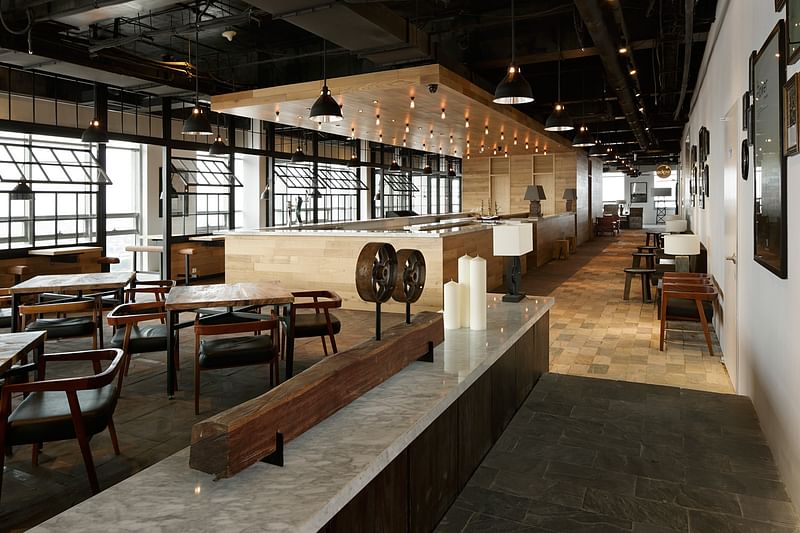
Category: Hotels
Architect/Designer: FHAMS Ltd.
Project: Tama Hotel Phnom Penh Tower
Location: Phnom Penh, Cambodia
"Located in the Phnom Penh Tower building, the Tama Hotel has been designed for oversees business visitors. Workspace and comfortable settings suited for both long and short stay guests’ help to create a homely environment. The restaurant has been designed to be a working lunch space for entertaining clients and desk space for laptops."
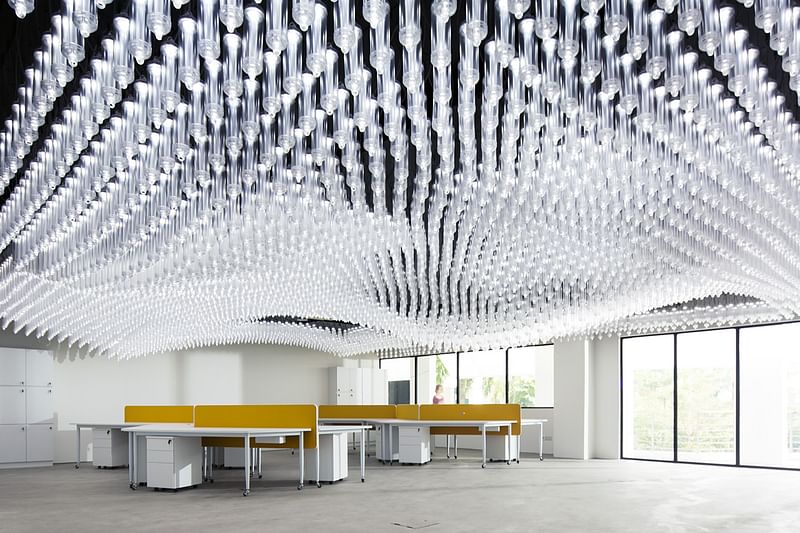
Category: Display
Architect/Designer: Singapore University of Technology and Design
Project: IDC Space: research and display space for the International Design Centre
Location: Singapore
"Situated at the heart of the Dover Campus of the Singapore University of Technology and Design, IDC Space is a showcase space for the International Design Centre. The 13m x 16m space hosts an office, a small prototyping lab as well as an exhibition gallery for showcasing some of the most exciting on-going IDC design research work. The space features a ceiling installation comprised of 6000 custom-designed lighting and display components; the light fixtures are based on a patent-pending SUTD/IDC design. Partitions, posters, and exhibition panels are suspended from the ceiling so the space can quickly be reconfigured for multiple uses."
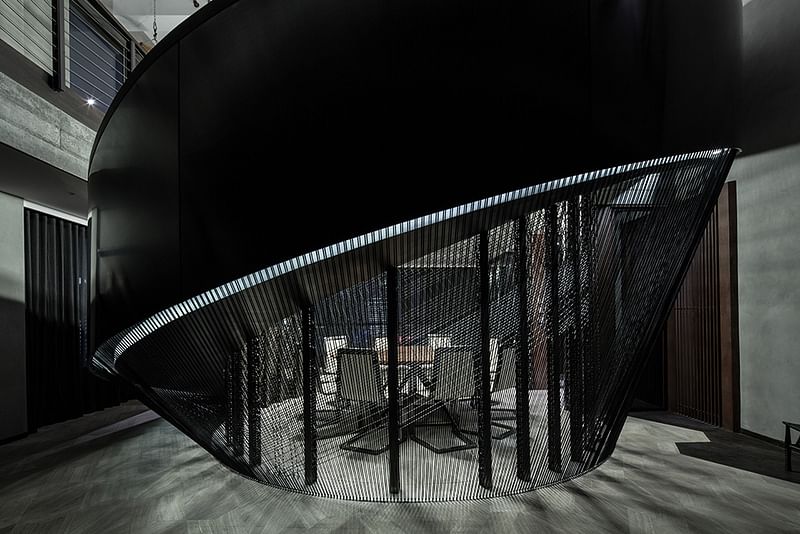
Category: Residential
Architect/Designer: JOYCE WANG STUDIO
Project: XINTIANDI PENTHOUSE
Location: Shanghai, China
"A three-storey penthouse set in the heart of Shanghai’s Xintiandi district, this private residence boasts some of the best lake and skyline views in the city. A cantilever staircase winds around the double-height atrium and as one ascends the stairs the stunning view unfolds. The dinning area sits within a nest-like environment so the family can enjoy the intimacies of their home. Wood-grain etched concrete, Corten steel and walnut timber line the walls, floors and ceiling in reference to the warehouses of old Shanghai. Geometric graphic patterns are created on the flooring as one material joins another in order to zone various areas in the home."
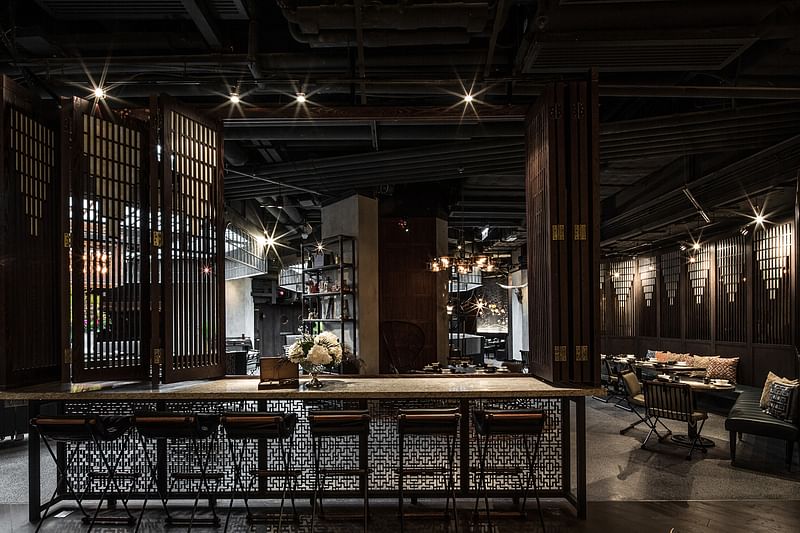
Category: Bars & Restaurants
Architect/Designer: JOYCE WANG STUDIO
Project: MOTT32
Location: Hong Kong
"Originally a storage facility for family heirlooms forgotten by wealthy Chinese immigrants, Joyce Wang Studio combined this history into their contemporary design. MOTT32 creates a blend of industrial New York design and classical Chinese décor, complemented with an inspired collection of forgotten heirlooms, Colonial-style furnishings and antique Chinese propaganda. Accessibility to the site for diners was also a difficult issue to tackle for the practice due to a long snaking route but this meandering path now creates a more hidden and exclusive arrival experience."
HIGHLY COMMENDED WINNERS:
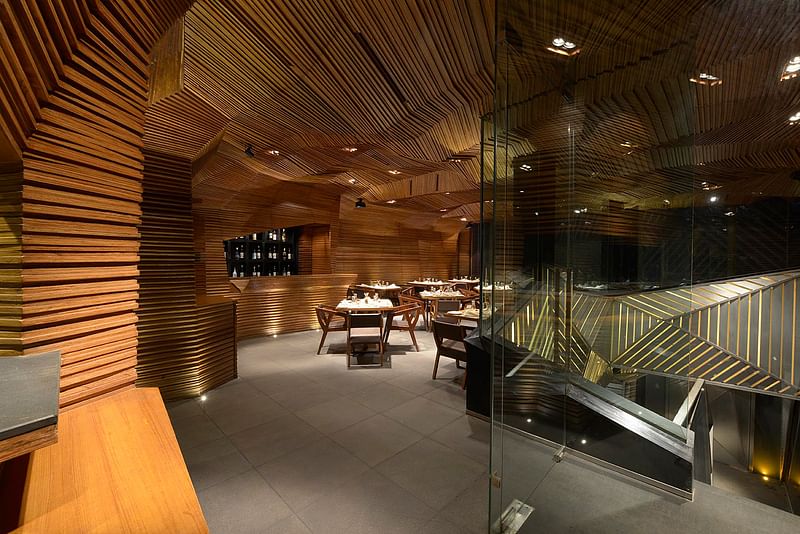
Category: Bars & Restaurants
Architect/Designer: SANJAY PURI ARCHITECTS
Project: Auriga
Location: Mumbai, India
"Transformed from a disused warehouse, Auriga is a nightclub and restaurant that creates the feeling of being within a sculpture rather than looking at one. The nightclub on the ground floor is made up of a series of angular aluminium fins that fold to create the roof, the walls, bar and staircase. On the second floor the restaurant is a more fluid design to contrast to the angular shapes downstairs, thin wooden strips flow freely from the ceiling and walls to the bar and kitchen counters. Auriga has been designed and delivered on a small budget and in a sustainable manner, the lower floor is made from the waste metal left over from the manufacturing of air conditioning units and the upper level is leftover wood from other projects."
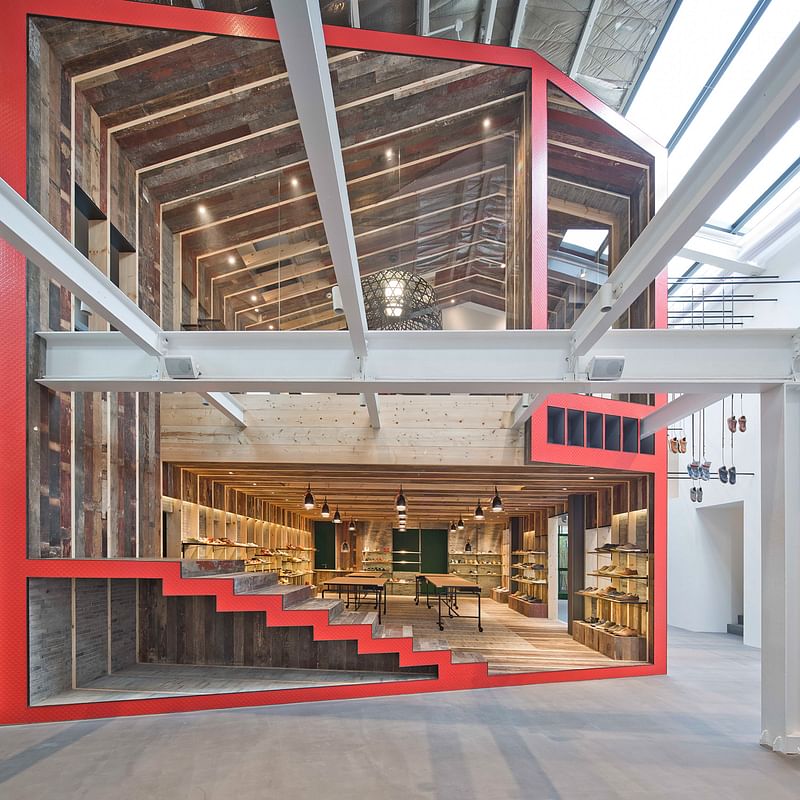
Category: Retail
Architect/Designer: Neri&Hu Design and Research Office
Project: Camper Showroom/Office
Location: Shanghai, China
"Inspired by the surrounding urban environment, this Camper Showroom reassembles the Shanghai ‘nong-tang’ alleyways. An exterior lane extends into the showroom creating a sectional cut in the structure and a skylight heightens the experience by casting long linear shadows across the walls throughout the day. Neri&Hu designed the store as their interpretation of a two-storey house slotted in an old warehouse. The project sees grey brick combined with wood salvaged from demolished lane houses. The salvaged wood reveals a history from the paint, newspaper and wallpaper still attached to the planks."
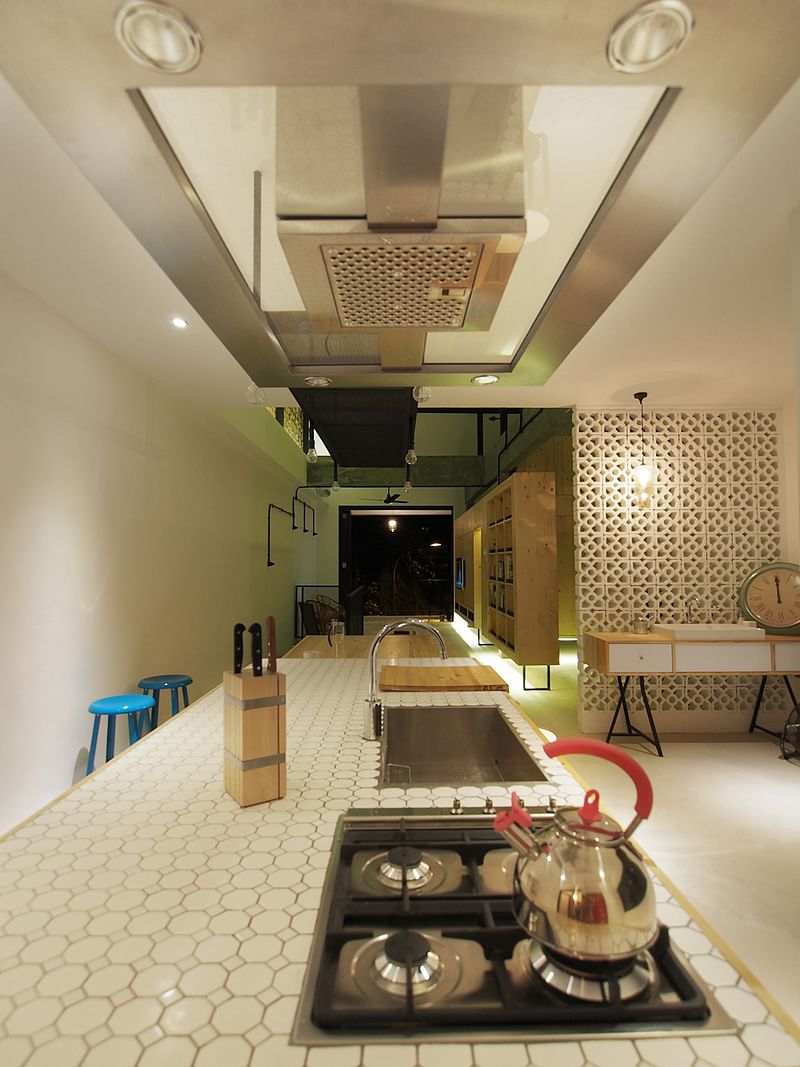
Category: Residential
Architect/Designer: Manor Studio Pte Ltd
Project: Chu Lin Road Apartment
Location: Singapore
"Chu Lin Road Apartment is an intervention within an apartment built in the 1960s post war period, nestled in the quaint neighbourhood of Chu Lin Road. The original footprint of the apartment was both deep and long but suffered from a lack of natural light and ventilation. The impetus of the new design was to retain the spaciousness of the original layout whilst encouraging maximum cross ventilation and natural light. The false ceiling that ran across the space was removed and the original walls were demolished in favour of an open plan space, following the structural beams. These beams, which once used to cap off the full height brick walls, now support a floating solid pine cabinetry in the middle of the apartment. Designed with different heights and porosity, and extending in various directions, this central cabinet piece is conceived as a sculpture that not only forms the focal point of the apartment but also delineates the spaces while maintaining spatial continuity, ventilation and natural lighting throughout the apartment."
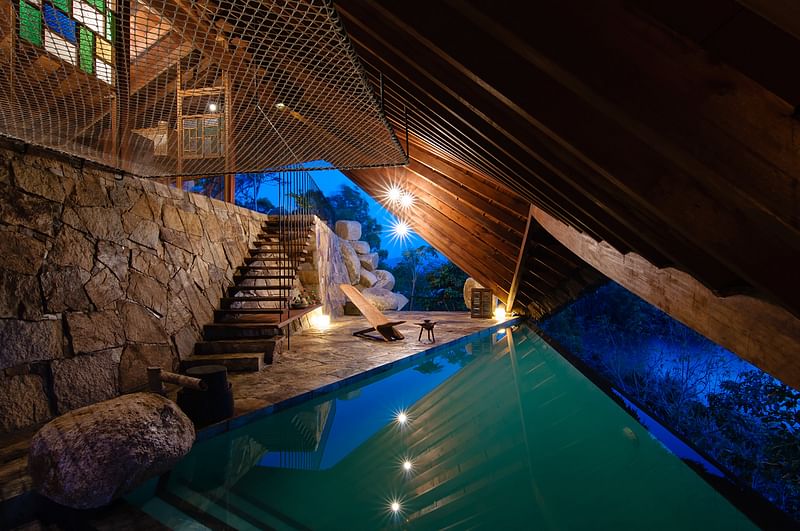
Category: Hotels
Architect/Designer: a21studio
Project: The Tent
Location: Nha Trang, Khanh Hoa, Vietnam
"The Tent is a small spa perched in the folds of a rock face terrace, inside an operating hot spring and mineral resort looking over the main river of Nha Trang city, Vietnam. One of the biggest constraints of the site is the intense heat from the West, which is constant throughout the year but the Tent's steep roof with thick thatch helps not only to deflect the sunlight but also blends the project with the surrounding landscape. The roof props lend a distinctive look to the Tent, shields the interior against the elements and also makes up the main structure of the building. The main beams that span the Tent are connected using indigenous building techniques, mortise and tenon joints, together with local materials, dry-stacked stones and coconut leaves, with rocks quarried on site and reinforced steel and tiles. Inside the Tent, the space is divided into two levels, on the lower space there is an infinity mineral pool with traditional wooden furniture. On the upper floor, there is a private bedroom covered by a wood frame and coloured glass with a net installed in the void between the structure and rock, allowing guests to look down to the river below."

Share
0 Comments
Comment as :